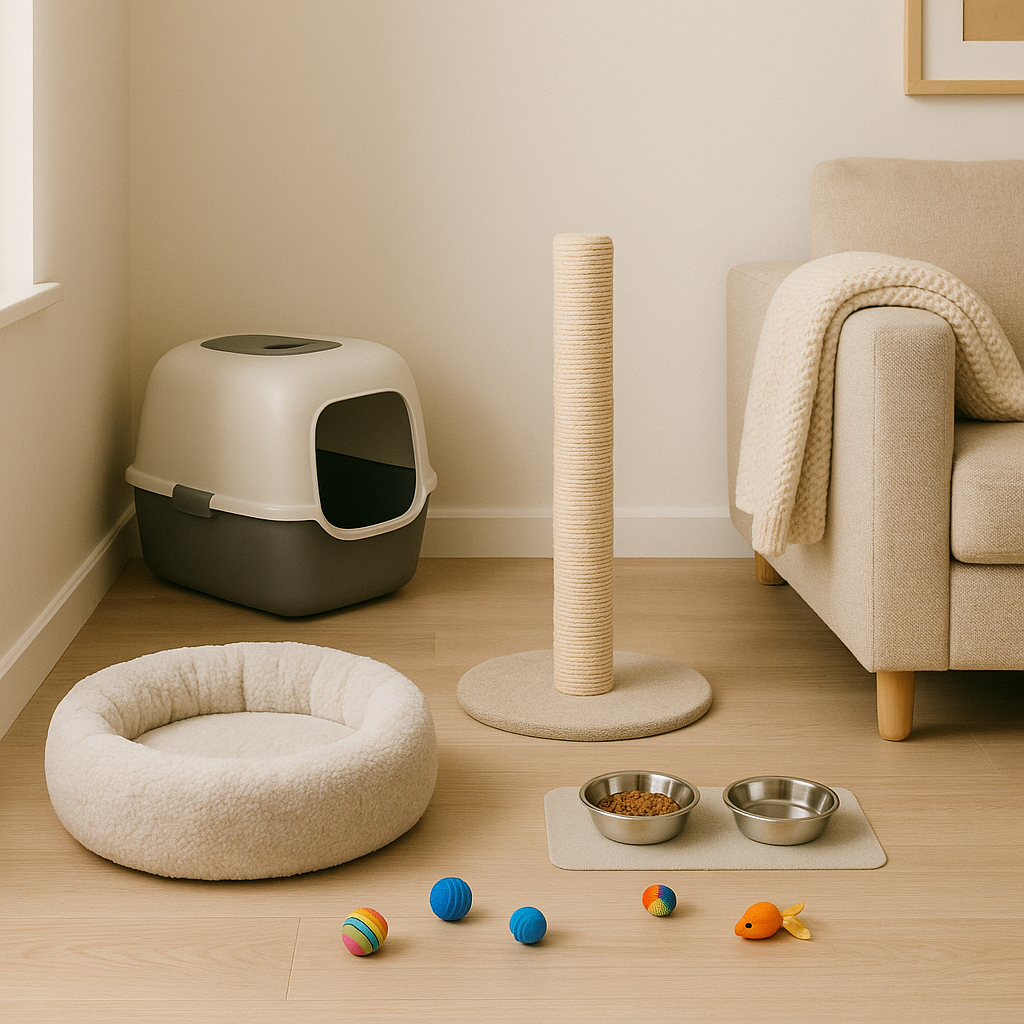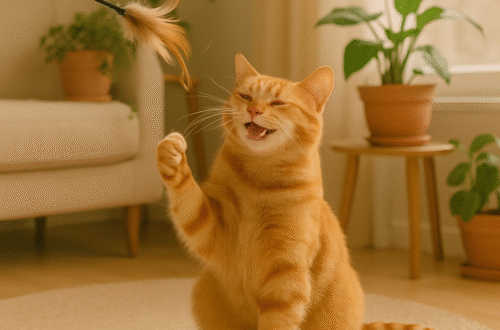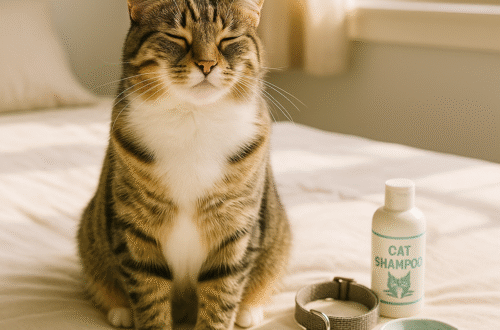Bringing home your first cat is exciting but it can also raise a hundred questions. What should you buy first? How often should you feed? How do you build trust without overwhelming your new companion?
This beginner-friendly guide walks you through each step so you feel confident from day one. You’ll learn how to cat-proof your space, pick the right food, set up litter the smart way, and create routines that keep your cat healthy and relaxed. Keep it simple, consistent, and kind you’ve got this.
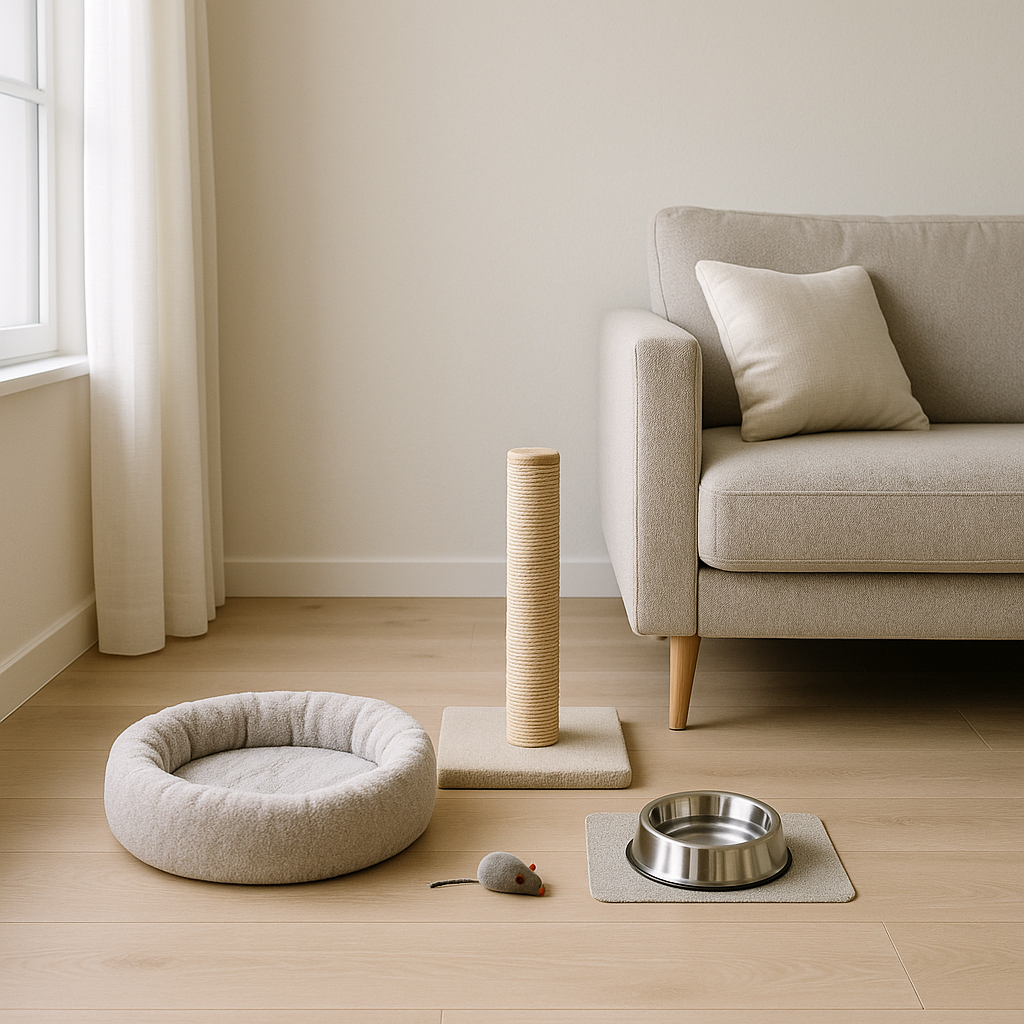
1) Preparing Your Home Before Bringing a Cat
A calm, predictable environment helps your cat settle quickly. Think “quiet, safe, and simple” for the first few days.
Cat-Proof the Space
- Hide hazards: Tuck away cables, secure dangling blind cords, move breakables, and keep cleaning chemicals locked.
- Remove toxic plants: Common ones include lilies, pothos, philodendron, dieffenbachia, and sago palm.
- Check windows/doors: Install sturdy screens; keep balcony doors shut to prevent escapes.
- Create a “safe room”: Choose a small, quiet room (bedroom or study) where your cat can decompress.
Set Up a Starter Zone
- Essentials in one place: Bed, litter box (away from food), water, and a few toys.
- Vertical comfort: Add a low shelf, window perch, or small cat tree for security through height.
- Scent strategy: Place a blanket or towel to hold familiar smells; avoid strong perfumes or room sprays.
Make the First Day Smooth
- Transport quietly: Use a sturdy carrier lined with a soft towel.
- Let them choose contact: Open the carrier in the safe room and sit nearby—no chasing, no sudden grabs.
- Keep noise low: Limit visitors, loud music, and vacuuming for the first 48–72 hours.
- Routine > perfection: Feed, play, and clean on a consistent schedule to build trust fast.
Helpful checklist for your safe room:
- Litter box + scoop
- Water bowl (or fountain) + food bowl
- Bed or soft blanket
- Scratching post (sturdy, tall enough for a full stretch)
- 2–3 simple toys (wand toy, ball, kicker)
- Low perch or window seat
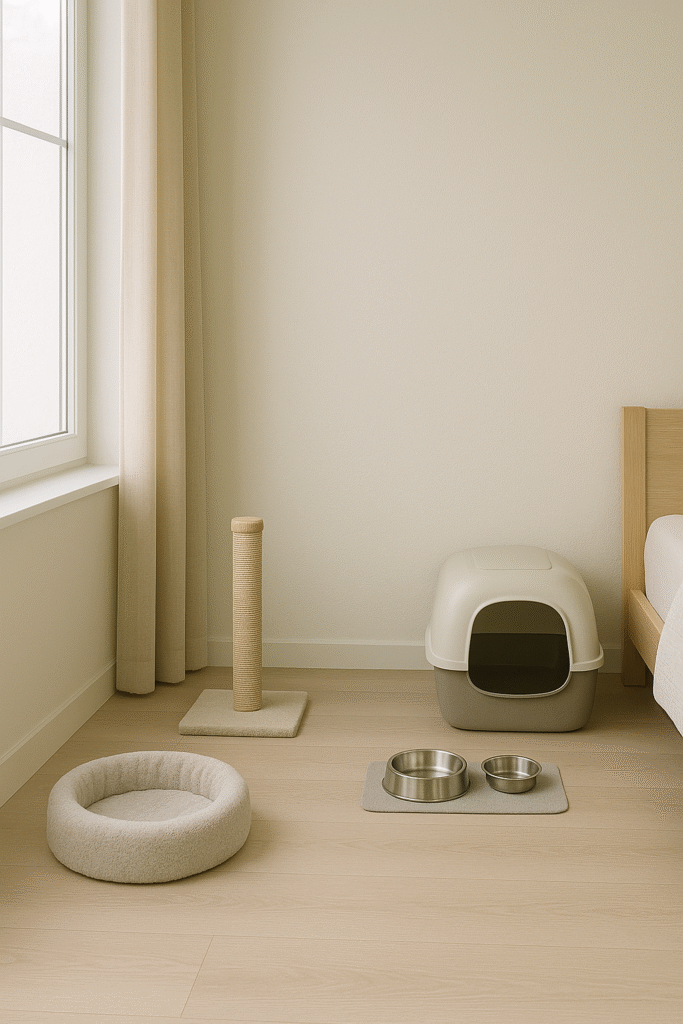
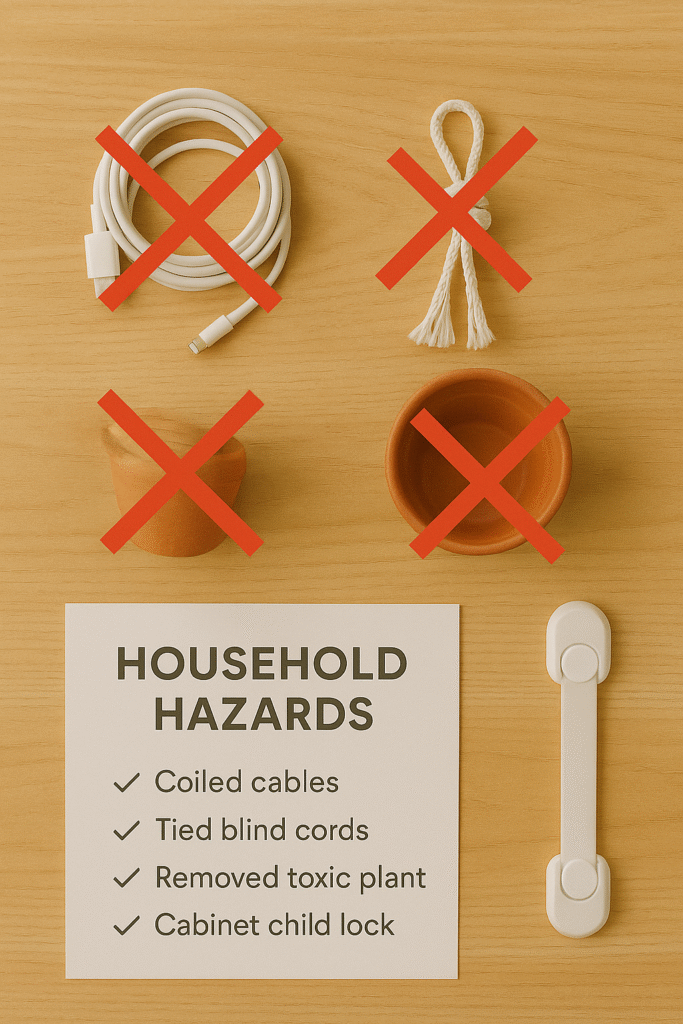
2) Choosing the Right Food and Feeding Schedule
Food is one of the biggest decisions for new cat owners because it directly affects your cat’s health, energy, and lifespan. Cats are obligate carnivores, which means they thrive on diets rich in protein and animal-based nutrients. Getting this part right will save you vet visits later.
Picking the Right Food
- Dry Food (Kibble): Convenient and helps keep teeth cleaner, but can be low in moisture.
- Wet Food (Cans/Pouches): Higher in protein and hydration; great for urinary health.
- Mixed Feeding: Many vets recommend combining both for balance.
- Special Diets: Kittens, adults, and senior cats all have different needs look for “life stage” on the label.
Feeding Schedule
- Kittens (up to 1 year): 3–4 small meals a day.
- Adult Cats (1–7 years): 2 meals a day (morning and evening).
- Seniors (7+ years): Still twice daily, but watch portion sizes to prevent weight gain.
Portion Control
- Follow the feeding guide on the food packaging as a starting point.
- Adjust based on activity level indoor cats burn fewer calories than outdoor explorers.
- Regularly check your cat’s weight; obesity is a common (but preventable) issue.
Treats in Moderation
- Treats should be no more than 10% of daily calories.
- Use them for bonding, training, or rewarding good behavior.
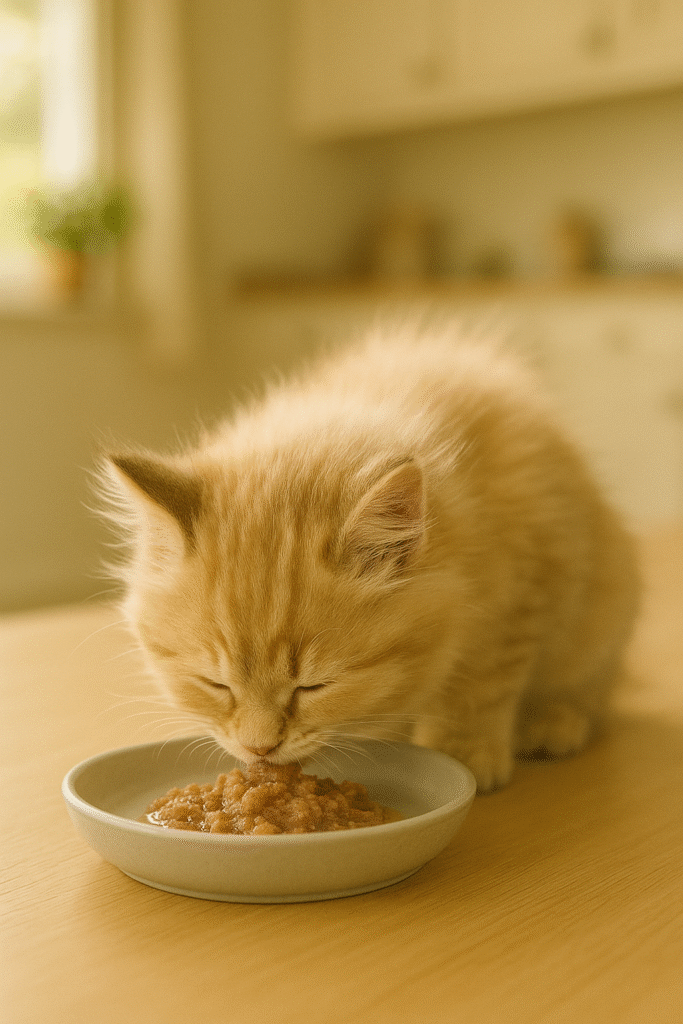
3) Essential Cat Supplies Every New Owner Needs
Before your cat even steps paw into your home, it’s best to have all the basics ready. Having the right supplies ensures a smooth transition, reduces stress for your cat, and makes life much easier for you as a new owner.
Must-Have Supplies
1. Litter Box & Litter
- Rule of thumb: 1 box per cat + 1 extra.
- Covered vs. uncovered depends on cat preference.
- Choose clumping or non-clumping litter based on ease of cleaning.
2. Food & Water Bowls
- Stainless steel or ceramic are best (plastic can harbor bacteria).
- Shallow bowls help prevent whisker fatigue.
3. Scratching Post
- Cats scratch to mark territory and keep claws healthy.
- Tall, sturdy posts are best so they can stretch fully.
4. Comfortable Bed
- A quiet, cozy space where your cat can feel secure.
- Some cats prefer beds by a window, others like covered “cave” styles.
5. Toys
- Wand toys, small balls, and catnip mice for play and exercise.
- Rotate toys to keep things fresh and engaging.
Nice-to-Have Extras
- Cat Carrier (for safe travel and vet visits).
- Cat Tree / Perches (gives height, security, and play space).
- Water Fountain (encourages more drinking).
- Grooming Tools (brush, nail clippers, pet wipes).
Budget vs. Premium Choices
- Starter budget kit: Basic litter box, food bowls, scratching post, simple toys.
- Premium setup: Multi-level cat tree, automatic litter box, designer feeders, and plush beds.
